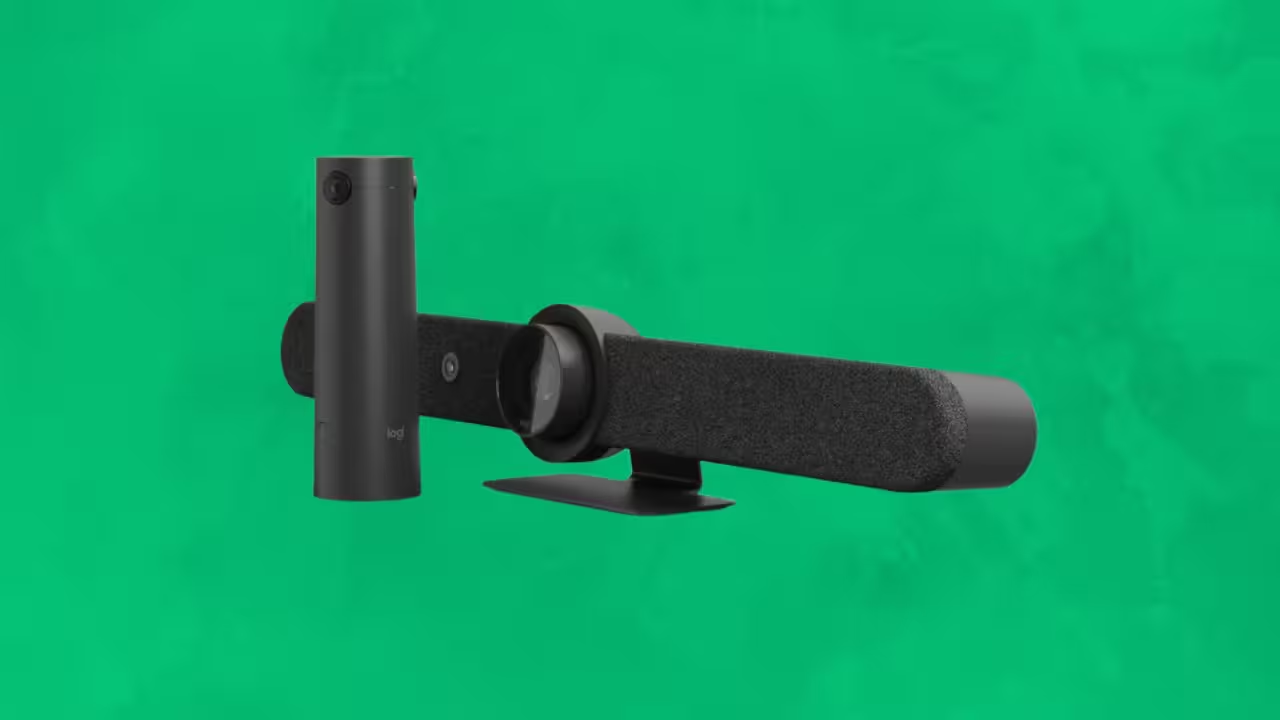
Table of Content
AV professionals are under pressure to deliver systems that add measurable value. Grand View Research attributes the projected 6.1% growth by 2030 to the integration of AI capabilities, smart devices, and hybrid work adoption, all of which mirror client expectations in 2025.
The 17 AV trends discussed in this guide explore fundamental shifts in how organizations approach communication, collaboration, and audience engagement. Understanding what's happening in the market and why it matters will help you make informed decisions that align technology investments with business objectives.
1. 5G Networks and Enhanced Connectivity
5G networks are changing the game for AV deployments through lightning-fast speeds up to 10Gbps and ultra-low latency under 1 millisecond. By the end of 2024, global connections will have passed 2.25 billion, growing four times faster than 4G did at the same stage. In North America, 77% of the population already has coverage, with nearly 300 million active connections. Organizations switching to 5G-powered AV systems are seeing smoother hybrid meetings, live events, and real-time content sync on digital signage.
What used to require extensive wired infrastructure can now happen anywhere with 5G coverage. Retail brands can set up pop-up stores with instant digital displays, healthcare providers can deploy mobile consultation units that work as well as fixed facilities, and schools can create outdoor classrooms with the same AV capabilities as traditional spaces.
2. Direct View LED and MicroLED Displays
Direct View LED and MicroLED displays are finally hitting their stride, using individual LEDs as pixels to deliver brightness levels that make LCD screens look dim by comparison. We're talking up to 10,000 nits of brightness with infinite contrast ratios and modular designs that scale to virtually any size. While the upfront cost runs 2-3 times higher than LCD, the math gets interesting when you look at the full picture. These displays deliver 40% lower operating costs over 10 years, thanks to lifespans exceeding 100,000 hours and 30-50% lower energy consumption.
3. AV over IP (AVoIP) Infrastructure
For decades, AV installations meant running dedicated cables for every audio, video, and control line throughout a building. With AV-over-IP, organizations now send those signals across the same infrastructure that carries everyday internet traffic. This change makes systems easier to expand, reconfigure, and support across multiple sites. Because AV now lives on the network, cloud platforms can manage it centrally for pushing updates, monitoring performance, and scaling deployments with far less effort.
4. Meeting Equity and Inclusive Collaboration
Many companies have realized that giving everyone an equal voice in meetings is harder than it sounds. Only about 15 % of meeting spaces are properly equipped with video conferencing gear, and remote workers often feel like second‑class participants. To fix this, companies are rolling out systems that combine all their communication tools into one platform, making it easy to join a meeting with a single click and to bring your own device/meeting (BYOD/BYOM).
They’re also investing in smarter cameras and microphones that automatically focus on whoever is speaking and balance volume across the room. The goal is to ensure that, whether people are in the room or on video, they should be seen and heard equally. This push toward “meeting equity” is top of mind for IT decision‑makers; roughly three‑quarters say analytics tools that track meeting performance and participation are now essential.
To support these efforts, you can schedule welcome messages and agenda notes on lobby screens at precise times using Look’s advanced scheduling tools so everyone knows where to go and what’s coming next.
5. Cybersecurity for AV and IoT Systems

As workplaces fill up with connected displays, sensors, and smart microphones, security is becoming a serious concern. Bitdefender’s 2024 IoT Threat Report shows that home networks already see about 10 attempted cyber attacks per day, and vulnerabilities like buffer overflows and denial‑of‑service attacks are common in smart TVs, routers, and plugs. Business networks face the same risks but on a larger scale.
The problem isn’t just the devices themselves; complex supply chains and cloud services mean a single compromised vendor can knock out systems worldwide, as seen in recent outages. Organizations are responding by choosing devices built with security in mind, insisting on strong encryption and regular updates, and paying closer attention to who supplies their components.
For situations where data is more secure under the control of your organization, Look offers an on-premise deployment option that keeps content and analytics within your firewall while still delivering the ease of cloud management.
6. Hybrid Cloud and Edge Computing
Streaming video, digital signage, and smart sensors generate huge amounts of data. Sending it all to a distant data centre can cause delays and strain internet connections. That’s why the AV industry is moving toward “edge computing,” where some data processing happens right where it’s needed. For example, a local processor can continue to run digital signage if the internet goes down and filter out unimportant data before sending anything to the cloud.
Research shows that this reduces latency and saves bandwidth. At the same time, companies still want the flexibility of cloud storage and remote management, so hybrid setups, mixing local and cloud processing, are on the rise. To make the resilient architectures practical, Look supports offline playback, which caches media on each device so content keeps running smoothly even when connectivity drops.
7. Agentic AI and Intelligent Automation
Artificial intelligence has quickly moved from simple tools like speech‑to‑text to more sophisticated “agents” that can plan and act on their own. In AV, agentic AI can automate how meetings are set up and run, along with camera switching, lighting, and environmental controls without human intervention.
An agent could monitor occupancy sensors, calendar bookings, and user preferences to schedule spaces, start meetings automatically when participants arrive, adjust displays and acoustics, and summarize outcomes. Over time, the agent learns how specific teams collaborate and adapts the AV environment accordingly. When combined with digital twins and predictive analytics, agentic AI can proactively reconfigure rooms and manage device fleets based on utilization patterns and energy consumption goals.
McKinsey believes this next wave of AI could greatly increase productivity and fuel innovation, but only if businesses rethink their workflows to integrate these systems effectively and set clear rules about privacy and ethical use.
8. AI‑Enhanced Cameras and Microphones

AV hardware manufacturers are now building AI processors straight into cameras and microphones to capture clearer audio and video and automate production. Frost & Sullivan’s 2024 radar notes that AI-first meeting devices now offer meeting summaries, real‑time transcription/translation, speaker framing/tracking, background noise reduction, and face recognition. The effect is that remote participants see the active speaker clearly and can follow along with captions in their own language.
One example is Logitech’s Sight tabletop camera, designed to work with the Rally Bar. It uses dual 4K lenses and seven beamforming microphones to cover 315° of the room. Built-in AI cleans up background noise, detects voices, and tracks up to four speakers at once, smoothly switching as conversations shift. For smaller rooms, this removes the need for a camera operator and makes remote colleagues feel like they have a seat at the table. The system also creates metadata that can be used for meeting analytics.
In 2025, expect microphones that can correct poor acoustics using machine-learning dereverberation, and cameras that fix eye contact or automatically compose shots.
9. Ambient Intelligence and Smart Sensors
“Ambient intelligence” refers to environments that sense and respond to people without them having to do anything. The market for these systems is expected to grow from around US $23 billion in 2023 to more than US $170 billion by 2032, according to Fortune Business Insights.
In practical terms, this means displays that wake up when someone enters the room, microphones that adjust sensitivity based on ambient noise, and signage that tailors content to demographics detected by vision sensors. The convergence of sensor data and AI enables context‑aware experiences in retail, corporate lobbies, and entertainment venues.
When combined with user data, this technology helps organizations make better decisions about space usage and building operations.
To ensure context-aware content plays as intended, administrators can take screen snapshots of any Look-powered display on a schedule or in real-time to get quick visual checks without visiting each site.
10. Digital Signage Evolution
Smart digital signage has made some major strides over the years with automation, weather-triggered updates, and in some instances, using facial recognition for emotional marketing in DOOH. In 2025, signage systems are becoming even more context-aware, with the ability to interact with smart devices and sensors, including RFID, Bluetooth, NFC, cameras, thermometers, touch panels, and microphones, to provide targeted content and advertisements.
Early research by NEC showed that vision sensors can determine viewers’ age and gender to adapt content, while proximity sensors, QR codes, RFID, and Bluetooth help identify returning customers and trigger personalised messaging. For example, retailers are using computer‑vision analytics to gauge dwell time and adjust promotions in real time. In corporate environments, digital signage ties into space‑management systems to display room availability and environmental metrics.
Businesses are also simultaneously slashing both graphic design time and costs with the emergence of AI content generation tools right inside their signage CMS. For instance, the AI Wizard from Look Digital Signage gives you three unique template layouts personalized to your industry and messaging.
11. Workplace Analytics and Smart Building Integration
Hybrid work has become the dominant model; about 87 % of companies now run some form of hybrid program. That shift means office space needs are changing, too. Three‑quarters of organizations now track how their spaces are used, up from just over half in 2017. Around 40 % have invested in better conference room technology to support hybrid meetings.
Modern AV devices double as sensors, measuring occupancy, room usage, and equipment health. When this data feeds into building management systems, it helps facility managers adjust heating, cooling, and lighting based on real usage and plan spaces more effectively. It also informs decisions about cleaning schedules and maintenance.
12. AV‑as‑a‑Service (AVaaS) Maturation
The subscription economy has finally arrived for AV. AV‑as‑a‑Service packages hardware, software, maintenance, and upgrades into a predictable monthly fee that shifts procurement from CapEx to OpEx. It has been accelerated by the rise of hybrid work and the move toward network‑based systems that can be monitored and updated remotely. Rather than buying devices that may become outdated in a few years, organizations are opting for services that grow and adapt with them.
13. Sustainable AV Solutions
Environmental regulations in Europe and North America are pushing manufacturers to design products that use less energy and produce less waste. New LED and micro‑LED displays can use up to 60 % less power than older technologies. ENERGY STAR and EPEAT certifications help buyers identify equipment that meets strict energy efficiency standards.
Sustainability also involves using recyclable materials, designing products for easy repair and recycling, and managing end‑of‑life disposal responsibly. Features like automatic brightness control and scheduling also reduce electricity use without sacrificing performance.
14. 8K Resolution and Advanced Display Technology

While 8K adoption in consumer TVs is modest, professional applications are pushing the envelope. Display manufacturers are introducing 31‑ to 33‑inch monitors with 8K resolution and up to 120 Hz refresh rates, delivering 33 million pixels and cinema-grade color spaces. These monitors are designed for content creators, engineers, and medical imaging professionals who need extreme detail and colour accuracy. In corporate settings, dvLED walls scale to hundreds of inches without seams, enabling immersive command centres and digital canvases.
16. Interactive Streaming and Audience Engagement
The market for interactive streaming, where viewers can vote, comment, play games, and even make purchases, is growing at more than 24 % a year and is expected to quadruple this decade. Streaming platforms are adding features like chat, polls, and augmented reality to engage audiences and create new revenue streams, such as virtual gifts and exclusive content tiers. The rollout of 5G networks and blockchain‑based platforms will lower latency and give creators more control over how they distribute and monetize their content.
17. Voice‑Controlled AV Systems
The demand for smart speakers and voice assistants is spilling into professional environments. Consumers enjoy controlling music and lighting with simple spoken commands, and they expect similar convenience at work. Modern AV hardware integrates with major voice platforms, letting users start presentations, adjust volume or call technical support hands‑free. Research shows that user‑friendly interfaces and voice control are key factors driving audio hardware sales. As always, organizations should look for products that respect user privacy and integrate seamlessly with existing smart systems.
Making Smart AV Decisions in 2025
The AV industry has reached a turning point where technology decisions directly impact business results. What matters now is how well systems work with existing workflows, adapt as needs change, and provide actionable insights that inform better decisions.
AV professionals and decision-makers who treat these trends as essential strategies will deliver more value to their clients and end-users.
Ready to bring your AV system up to speed? Look Digital Signage comes with AI tools that automate content creation, remote monitoring, and security that meet enterprise standards. Try it free for 14 days with no functional limitation.

FAQs
How big is the AV industry in 2025?
The AV industry is growing at a steady 6.1% CAGR, suggesting a mature market projected to reach $389.2 billion by 2030 from $256.5 billion in 2023. Connected systems and IoT / integration, AI capabilities, and rising use of digital signage are fueling this expansion in both enterprise and consumer spaces.
What is the future of AV technology?
AV technology is moving toward integrated, intelligent systems that work with existing business infrastructure. Expect more AI-driven automation, software solutions, and subscription-based models that make advanced capabilities accessible without massive upfront investments. Organizations will judge AV success by business results like better meetings, lower costs, and smarter use of space rather than technical specs.
How does Look Digital Signage support the AV trends shaping 2025?
Through its reseller program, Look gives AV partners a chance to build recurring revenue opportunities with flexible licensing, hardware bundles, and optional white Label options. Businesses get reliable playback in mobile setups with 5G connectivity, personalized content creation through the AI Wizard, and built-in integration capabilities.
Can Look Digital Signage integrate with existing AV and IT infrastructure?
Yes, and it happens in two ways. The Zapier integration gives you access to hundreds of third-party apps. You can connect displays to business systems such as point of sales and inventory management to automate content updates. For more complex integrations, Look provides APIs that developers can use to build custom connections.
What security features does Look provide for enterprise environments?
The Look DS platform runs on AWS, one of the most secure cloud infrastructures available, with multiple layers of protection built in. Multi-user access controls let you restrict and define user permissions, and two-factor authentication adds extra protection for administrator accounts. The system works with your existing user management, handles security updates automatically, and logs everything for audits. For organizations with strict requirements, the on-premise option keeps all content and control inside your network while still providing modern management capabilities.
How quickly can organizations deploy Look Digital Signage?
For a single location, say 1-5 screens, installing the Look app and configuration can take less than an hour, with 100+ free pre-designed templates to get polished, on-brand content playing almost immediately. Large multi-location rollouts with custom integrations typically take a couple of weeks. Most of that time goes to your IT team building connections between Look and your specific business systems using the provided APIs.




.avif)



